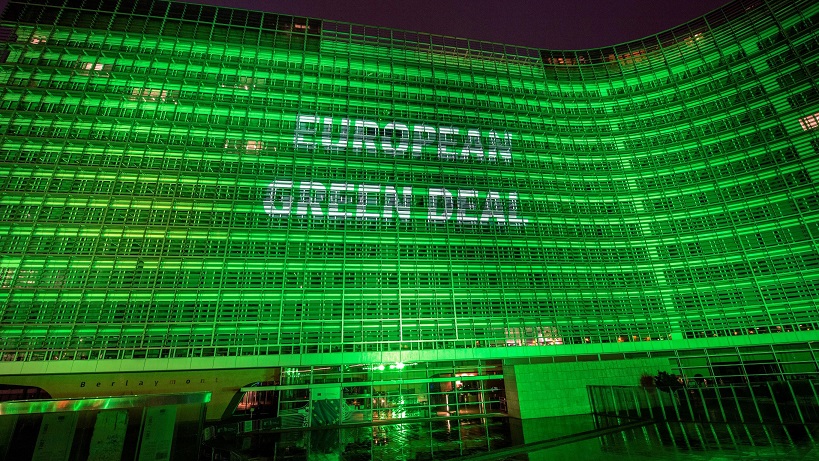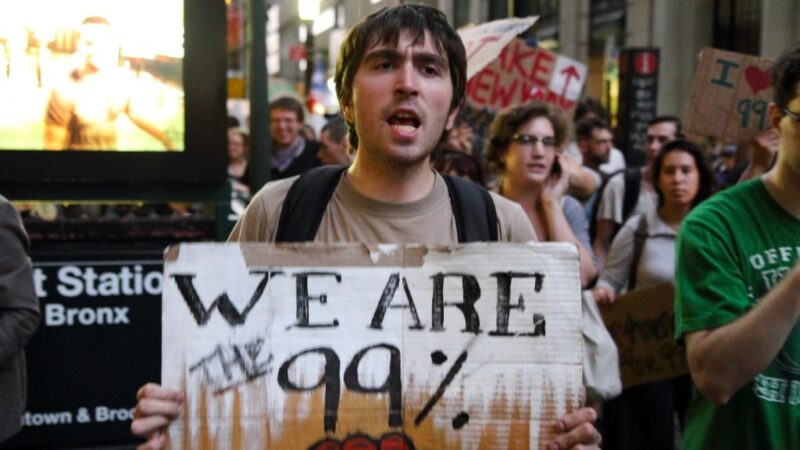 The Berlaymont building (European Commission), at night, lit green for the European Green Deal: Will business decisions be made by the EU bureaucracy in the future? (Image: EC - Audiovisual Service)
The Berlaymont building (European Commission), at night, lit green for the European Green Deal: Will business decisions be made by the EU bureaucracy in the future? (Image: EC - Audiovisual Service) With its so-called taxonomy, the European Union is planning an economic structure whose drastic consequences for productivity and prosperity are only gradually becoming apparent. The EU taxonomy is a classification system that creates a list of environmentally friendly economic activities. It is part of the EU’s Green Deal, which aims to achieve environmental goals such as combating climate change, reducing pollution, and protecting biodiversity. It is the basis for numerous regulations designed to push sustainable business practices. Since the financing requirements are high, it mobilizes both public funds and private capital.
The likelihood of bad investments increases when reporting requirements and financing are no longer decided by profit-oriented banks but by a sprawling EU bureaucracy. Falling productivity and rising prices are likely to result.
With the “Corporate Sustainability Reporting Directive,” from January 1, 2024 (to start) around 49,000 large and medium-sized companies will have to report on the impact on people and the environment of their business operations, as well as on the effect on the company of sustainability considerations. The European Commission is currently having the European Financial Reporting Advisory Group develop detailed rules for this. The envisaged “European Sustainability Reporting Standards” currently comprise 1144 disclosure requirements within 84 reporting requirements.
From 2024, banks will also have to classify their loans according to environmental and climate criteria and disclose the proportion of balance sheet items that comply with the taxonomy (the Green Asset Ratio). In the future, the taxonomy shall also be extended to loans for medium-sized and small companies, which have not yet been required to report on sustainability. For the “Banking Book Taxonomy Alignment Ratio,” banks may obtain information directly from companies or—if this is not possible—estimate it.
A Model of Capital Allocation Susceptible to Lobbying
The taxonomy thus changes the model of capital allocation in the EU. Traditionally, (often small and medium-sized) banks for instance in Germany allocated household deposits as loans to (small and medium-sized) businesses in the region. To do so, they maintained close relationships with businesses so that they could make good estimates of the expected returns on investments and default risks of the loans. Since the Deutsche Bundesbank kept interest rates high to keep inflation under control, only investment projects with relatively high expected returns were financed.
This ensured high productivity gains and growth. The taxonomy is now intended to direct savings to areas classified as sustainable by the European Commission. Close cooperation is emerging with the European Central Bank (ECB), which has not only announced that it will “decarbonize” the corporate bonds it holds, but has also made an initial “climate stress test” with the major banks.
In addition, green lending is conceivable along the lines of the so-called targeted longer-term refinancing operations that the ECB made during the Coronavirus crisis. The ECB loans had negative interest rates of negative one percent if banks committed to pass them on to businesses. In the future, there could be negative interest loans from the ECB if the lending is taxonomy compliant.
Because the criteria must be decided politically, the taxonomy is vulnerable to lobbying. Thus, nuclear energy and gas were certified as environmentally friendly, even though this was controversial. Under the pressure of the Ukraine war, it is being discussed whether defense companies should be considered “socially sustainable.” In addition, there are immense reporting obligations for companies and banks, which are to be externally audited according to European Commission standards.
Proliferating Bureaucracy and an Increasing Risk of Bad Investments
Finally, the returns on financed investments are likely to diminish as other criteria now come to the fore in financing decisions. There are already calls for a social taxonomy that would prescribe social criteria for lending. The likelihood of bad investments increases when reporting requirements and financing are no longer decided by profit-oriented banks but by a sprawling EU bureaucracy. Falling productivity and rising prices are likely to result. The green planned economy is a threat to prosperity in the EU, without helping the environment or the climate.
For the EU’s neighboring countries such as Switzerland and the UK, both negative and positive effects can be expected. Since the EU is an important economic partner, if growth in the EU is low or even negative, Switzerland’s and the UK’s exports are likely to decrease. On the other hand, Switzerland and the UK could benefit from capital inflows and talent migration from the EU if they manage to resist the lure of the green planned economy and keep capital allocation freer. The British avoided the taxonomy with Brexit and seem to be already gearing up for it with an intended liberalization of their capital market.
Slightly revised version by the author of an article that first appeared in the NZZ of 22.02.2023 under the title “On the way to a green planned economy.” Also online at NZZ.CH.
Further reading:
Schnabl, Gunther. “EU Taxonomy and ECB Monetary Policy: Moving Towards Centrally-Directed Green Capital Allocation?” The Economists’ Voice, vol. 19, no. 2, (2022), pp. 255-261. https://doi.org/10.1515/ev-2022-0030
Translation from German by Thomas and Kira Howes



